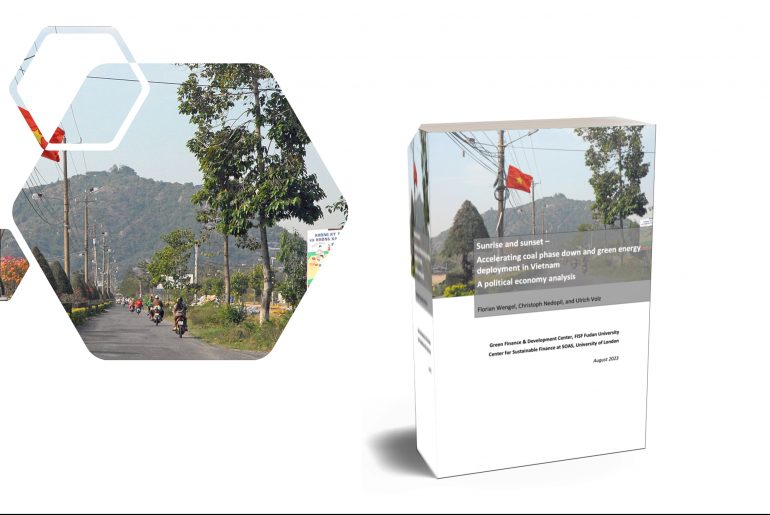Summary – from climate to biodiversity in the BRI and beyond
In the midst of increasing global awareness of environmental and sustainability problems, two interconnected issues are high on the agenda for 2020: climate change and biodiversity. This is in particular true for China who is both under pressure to increase the level of ambitions in its Nationally Determined Contribution (NDC) at COP26 on climate change, as well to host an impactful COP15 on biodiversity. As a key international partner of China on climate change, the EU can play a similar role on biodiversity. Ultimately, with China and EU together making up a key source of both problems, having resources to find solutions, and representing both developed and developing countries, such a partnership is critical to repeat the success of Paris 2015 on climate change in Kunming 2020 on biodiversity. As a key platform and geographical scope of Chinese overseas engagement, this is particularly important for the Belt and Road Initiative (BRI).
The connection between climate change and biodiversity
Climate change and biodiversity are key parts of what can be labelled as ‘green’, which additionally includes natural resource preservation and pollution prevention and control. These four aspects of green are all interconnected in a variety of ways. When it comes to links between climate change and biodiversity the scientific consensus is clear in highlighting a number of both direct and indirect connections. To give an example, insects such as bees, dragonflies, ladybugs, and beetles pollinate the crops we rely on for food production. As the climate changes in terms of temperature, rainfall, and seasons, this directly impacts the biodiversity of insects who may change in numbers and range, severely affecting pollination. If the insects disappear entirely, we could lose over a third of all crop production. Making up more than half of global food production, BRI countries are often subject to such risks.
Chinese international ambitions to protect the climate and biodiversity
After the failure to reach a global agreement on climate change at COP15 in Copenhagen, China and the US made a joint commitment of support in advance of COP21, providing a key ingredient in its success. In particular, China played a crucial role in harnessing support of other developing countries, who felt that if China could support the agreement, so could they. Consequently, the increasing Chinese ambitions on climate change was instrumental in reaching an agreement on climate change. When it comes to biodiversity, as one of 17 mega-biodiversity countries and home to about 10% of plant species and 14% animals on earth, China has had clear and designated domestic policies in place since 1994. Despite some positive trends such as on forest cover, biodiversity is under severe threat in China. While participating in international conventions on biodiversity, China has not actively supported strong international governance regimes. However, China is today increasing environmental consciousness of many internationally oriented initiatives, suggesting that support for a strong Paris-style regime for biodiversity may be possible. Signs of increasing ambitions include green rhetoric on the Belt and Road Initiative, statements on environmental safeguards of Chinese policy banks, as well as cancellation of environmentally questionably projects such as within dams, coal, and mining. As in the runup to Paris, such potential support is a prerequisite for a strong outcome in COP 15 in Kunming. What is concretely hoped for is a repeat of the success of the Paris Agreement, providing a paradigm shift in international governance of biodiversity.
Potentials of China-EU cooperation for sustainable development
As the two leading actors on climate change today, China and the EU can expand such collaborative efforts to include biodiversity. Early signs that this could be feasible are seen in the EU-China Summit Joint Statement from April 2019:
“Both sides recognise the importance of cooperation in addressing global environmental challenges, including pollution and marine litter. Both sides are willing to deepen cooperation on issues such as halting biodiversity loss, CITES implementation and enforcement, combating illegal trade in wildlife and wildlife products, sustainable forest management, combating illegal logging and associated trade, as well as desertification and land degradation. The EU and China look forward to a successful and landmark Conference of the Parties to the Convention on Biological Diversity in Kunming in 2020. Both sides will work together for an ambitious and realistic post-2020 global biodiversity framework at the Convention on Biological Diversity Conference of the Parties hosted by China in 2020.
… The two sides will continue to forge synergies between the EU strategy on Connecting Europe and Asia as well as the EU Trans-European Transport Networks and China’s Belt and Road Initiative“
Continuing to work closely together on other environmental issues such as climate change, the joint and coordinated efforts of China and EU jointly steer the global narrative. This is both because both countries are key sources of greenhouse gas emissions, they jointly have significant financial and technical resources to support the cause, and because they represent developing and developed countries which other countries, such as many BRI countries, in each category can rally behind.
Recommendations for future cooperation to improve biodiversity and climate protection
- Joint commitment to a paradigm-changing outcome of COP15 in Kunming, providing a Paris-style international governance regime on biodiversity: Just as a critical moment in the lead up to the Paris Agreement was the joint commitment of China and the US, so can China and the EU make a similar commitment to biodiversity in advance of the conference in the final quarter of 2020. With the 2020 EU-China summit planned for the end of march 2020, this would make a suitable occasion to put forward such a commitment.
- Joint commitment to establish and finance a designated biodiversity fund, based on a similar institutional arrangement as the Green Climate Fund: Conserving biodiversity on a global scale requires substantial financial resources, which can originate in a global fund with the capacity to allocate resources where it maximizes impact. In a similar fashion to the Green Climate Fund, countries other than EU and China should be able to support at will and be able to qualify contributions as official development assistance. With many BRI countries being geographies where China and EU overseas engagements overlap, they are key subjects to such projects.
- Formalize research collaboration to harness and coordinate technical resources from universities, think tanks, and NGOs: Home to some of the worlds’ leading biodiversity experts, China and EU could establish formal research collaboration frameworks allowing for increased collaboration both on biodiversity in the two geographies as well as on a global scale. This could both be based on a new stand-alone collaboration framework and be part of the numerous ongoing case-by-case collaborations.
Mathias Lund Larsen is non-resident research fellow at the Green Finance & Development Center, FISF Fudan University. He is also a dual PhD Fellow at Copenhagen Business School and the University of the Chinese Academy of Sciences (Sino-Danish Center for Education and Research). His research is focused on the political economy of green finance in China from theory to practice, intention to impact, and domestic to overseas.
He has spent more than a decade working on the intersection between China, sustainability, and finance, and speaks fluent Chinese. He has previously held positions in the UN in New York, Nairobi, Bangkok, and Beijing and holds two double Masters degrees in and around political economy from Copenhagen Business School, Rotterdam School of Management, Sciences Po Paris, and Peking University.





Comments are closed.